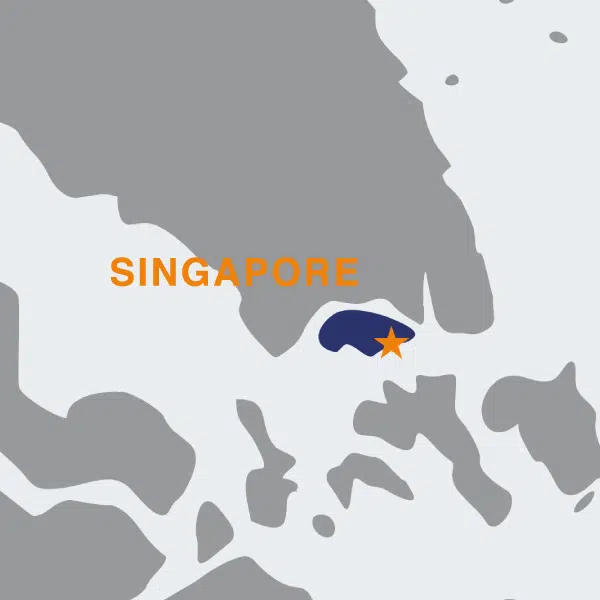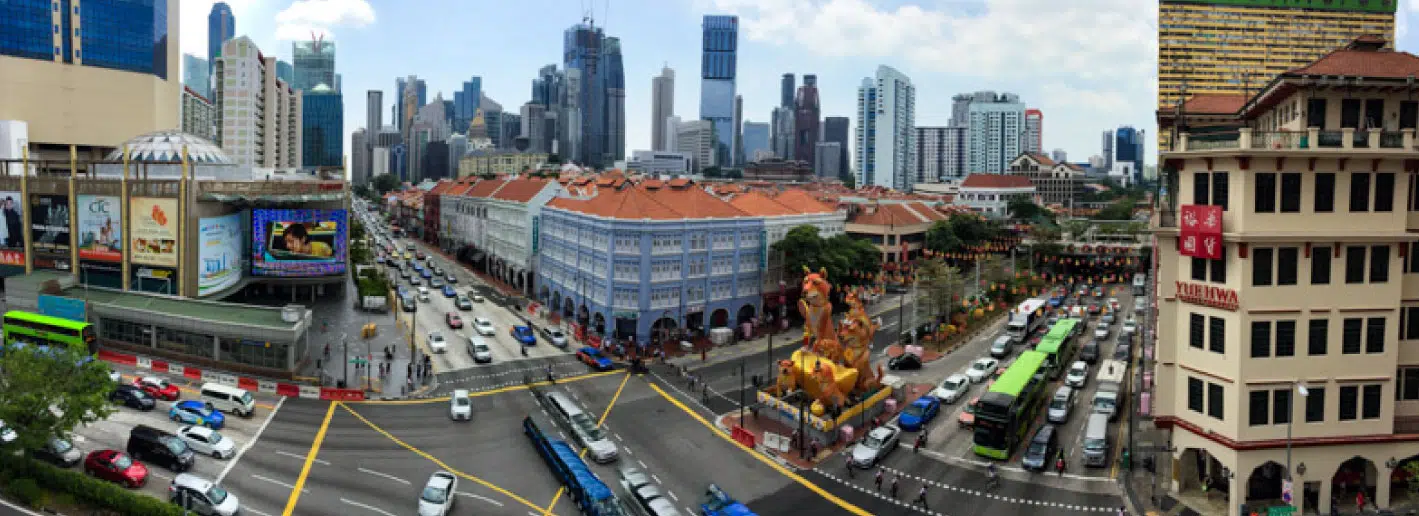Moving to Singapore
from Australia
Expats moving to Singapore will find themselves in a city credited with offering foreigners one of the finest lifestyles in the world.

The nation has an exemplary public transport system, excellent communications, top class healthcare facilities and a multi-ethnic and cosmopolitan culture that promotes tolerance and a good standard of life for its citizens. Not to mention, Singapore is incredibly safe.
Moving and Living in Singapore

Expats moving to Singapore will find themselves in a city credited with offering foreigners one of the finest lifestyles in the world.
The nation has an exemplary public transport system, excellent communications, top class healthcare facilities and a multiethnic and cosmopolitan culture that promotes tolerance and a good standard of life for its citizens. Not to mention, Singapore is incredibly safe.
Prudent measures by the government have ensured a stable economy, and with big names in business and trade establishing regional headquarters in the city-state, qualified expats will find plenty of professional opportunities.
Singapore has become home to a large percentage of high-earning expats, many who substantiate that they have access to much more disposable income than they did in their home country. That said, inflation continues to creep up, resulting in a higher cost of living than in many surrounding countries, and expats will need to make sure that they negotiate a salary that can cover the hefty rental costs for condominiums (apartments) or landed dwellings (house).
Raising children here is also ideal for parents, taking comfort in the knowledge that the city is almost crime-free, very clean and extremely safe. Furthermore, a variety of international schools provide a high standard of education and a variety of sporting opportunities ( e.g. Cricket, Rugby, Soccer, AFL, Swimming, Touch Football etc).
Not to mention, even though nearly 70 percent of the city is occupied by dense high rises and soaring sky skyscrapers, expats will find the government has balanced the concrete jungle with natural flora and fauna, including beautiful botanical gardens, zoos, waterfalls, vast parks, an extensive bicycle network and many outdoor recreation areas.
Coupled with the expertise and training of our staff, potential costly delays can be avoided. For your peace of mind and protection OSS World Wide Movers is a FIDI FAIM accredited company as well as being a member of the International Association of Movers (IAM).
Our network of FAIM/IAM accredited partners cover the whole of the South East Asian Region. As an independent Company we can choose the best and most suitable company to handle the clearance and delivery of your effects. Our partners in Singapore are well versed in all aspects of the requirements for importation of personal and household goods and are ready to meet your needs. This guarantees you a seamless, tailor made move right through to your new home on the other side of the world, for your personal effects, vehicle as well as your much loved pets.

Moving to Singapore from Australia with OSS
For over 50 years OSS World Wide Movers has been assisting individuals, business people, and Corporate clients relocate to Singapore. Moving to Singapore with OSS provides you with the professional service and advice that only comes from choosing a quality specialist international moving company.

Singapore’s highly efficient public transport system is world-renowned, making island exploration easy and convenient. Everywhere you go, you’ll be delighted by the impeccable cleanliness and order that have also become hallmarks of the island.
Moving your household goods to Singapore
Visa and Immigration Information
When travelling or moving to Singapore, make sure your passport and visas are correct and valid. Check these links to find out some of the latest requirements.
Consulate / Embassy in Australia
Contact the Singaporean Embassy by visiting 17 Forster Crescent Yarramumla, Canberra, ACT 2600, Australia. Phone +612 6271 2000 Fax +612 6273 9823 Email singhc_cbr@sgmfa.gov.sg or follow this link to the Embassy website:http://www.mfa.gov.sg/
Visa Information
General visa information can be found here: http://www.mfa.gov.sg/
Passport Information
Passport information can be found here: http://www.mfa.gov.sg/
Immigration Information
Immigration information can be found here: http://www.ica.gov.sg

Citizenship Information
Citizenship information can be found here: http://www.mfa.gov.sg/
General Information
Please click this link: http://www.mfa.gov.sg/
Social Media Links
Facebook Page: https://www.facebook.com Twitter Page: https://twitter.com/
All about Singapore – Moving to a new lifestyle

Singapore is a city-state, located at the southern-most tip of Malaysia. Modern Singapore was established in 1819 by Sir Stamford Raffles as an outpost for the British East India Company. At that time Singapore, was a small island only 710 square kilometres, it was home to a simple fishing village of just 1,000 inhabitants. Today, Singapore’s population has grown to approx. 5.7 million, making it the world’s second most-densely-populated country – and one of Asia’s most successful economies.
The city’s rich mixture of Asian and Western cultures offers visitors a truly unique experience. Boasting four official languages – English, Malay, Mandarin and Tamil – Singapore’s multi-cultural community lives in harmony, celebrating all major cultural festivals and ultimately combining to form a unity of excellence.
Singapore’s highly efficient public transport system is world-renowned, making island exploration easy and convenient. Everywhere you go, you’ll be delighted by the impeccable cleanliness and order that have also become hallmarks of the island. Visitors are struck by this the moment they arrive at Singapore’s modern Changi Airport. In the city, there is no need for a car. Public transportation is excellent and walking is a good way to explore the city. All major attractions are also accessible by tour bus. Since the city is only 140kms from the equator, the tropical temperatures do not vary much and rainfall is fairly evenly distributed through the year. Visitors will be struck immediately by Singapore’s abundance of parks, nature reserves and lush, tropical greenery.
The highways leading to the city are likewise neat and trim, lined with majestic palm trees and colourful bougainvilleas. Offshore, vessels from all across the globe queue up for their turns to load and unload in one of the world’s busiest container ports.
Singaporean food is legendary. The city’s distinctive hawker centres, coffee shops and food courts line the streets and malls, offering an abundance of sumptuous local fare and unique tastes of colourful local culture. Eating happens to be one of Singapore’s favourite pastimes, a fact reflected in the city’s amazing diversity of celebrity-chef restaurants, to the famous local Hawker Centres.
Another favourite pastime is exploring the city’s glitzy, vibrant and fancy shopping malls. You’ll find entire roads dedicated to shopping, with such an astonishing variety of malls, department stores and designer boutiques that you’ll find yourself looking for a spa at day’s end, just to soothe your happily tired feet.
Singapore’s skyline has grown enormously over the past few years. Marina Bay Sands – a world-class luxury hotel and casino – is just one of the many highlights, joined by such iconic establishments as the Esplanade, the Fullerton Bay Hotel and the Singapore Flyer. Yet in contrast and complement to all the dazzlingly modern structures, lovely historic shop houses in areas such as Chinatown, Arab Street and Little India retain their timeless charm, and are well taken care of by the Singaporean government.
While much of the city has enjoyed a remarkable burst of new construction in recent years, half the country is still wrapped in lush greenery, offering abundant opportunities for lively jungle hikes and serene nature walks. Mischievous monkeys, colourful birds and impressive water monitor lizards are common sights in the island’s many well-kept nature reserves.
This island country is actually not limited to just a single island. In fact, it is officially composed of a total of 63 islands – though there is only one among them that is developed and a major attraction: The island-resort of Sentosa – whose name means “peace and tranquility” in the native Malay language – is well worth a visit. It offers gorgeous beaches, five-star hotels, beautiful golf courses, and major theme parks, Universal Studios Singapore, S.E.A Aquarium, Singapore Cable Car, Bunge Jumping, Casinos and lots more.
Like most of Southeast Asia, Singapore is generally hot with high humidity. Sitting just 137 km North of the Equator it’s warm and humid year round, with the temperature almost never dropping below 20°C (68°F), even at night, and usually climbing to 30°C (86°F) during the day. Recent times, it even reached 35°C.
November and December is the rainy season. June-August is considered to be the best time to visit, but even then it rains often. Don’t let the climate stop you from going, however. Most buildings are air-conditioned (to the point that you may want to take a jumper), and when it does rain, it’s generally pours only for a short period of time.
For over 50 years OSS World Wide Movers has been moving individuals, business people, and Corporate clients relocate to Singapore. Moving to Singapore with OSS provides you with a professional service and the advice that only comes from choosing a quality specialist international moving company.







